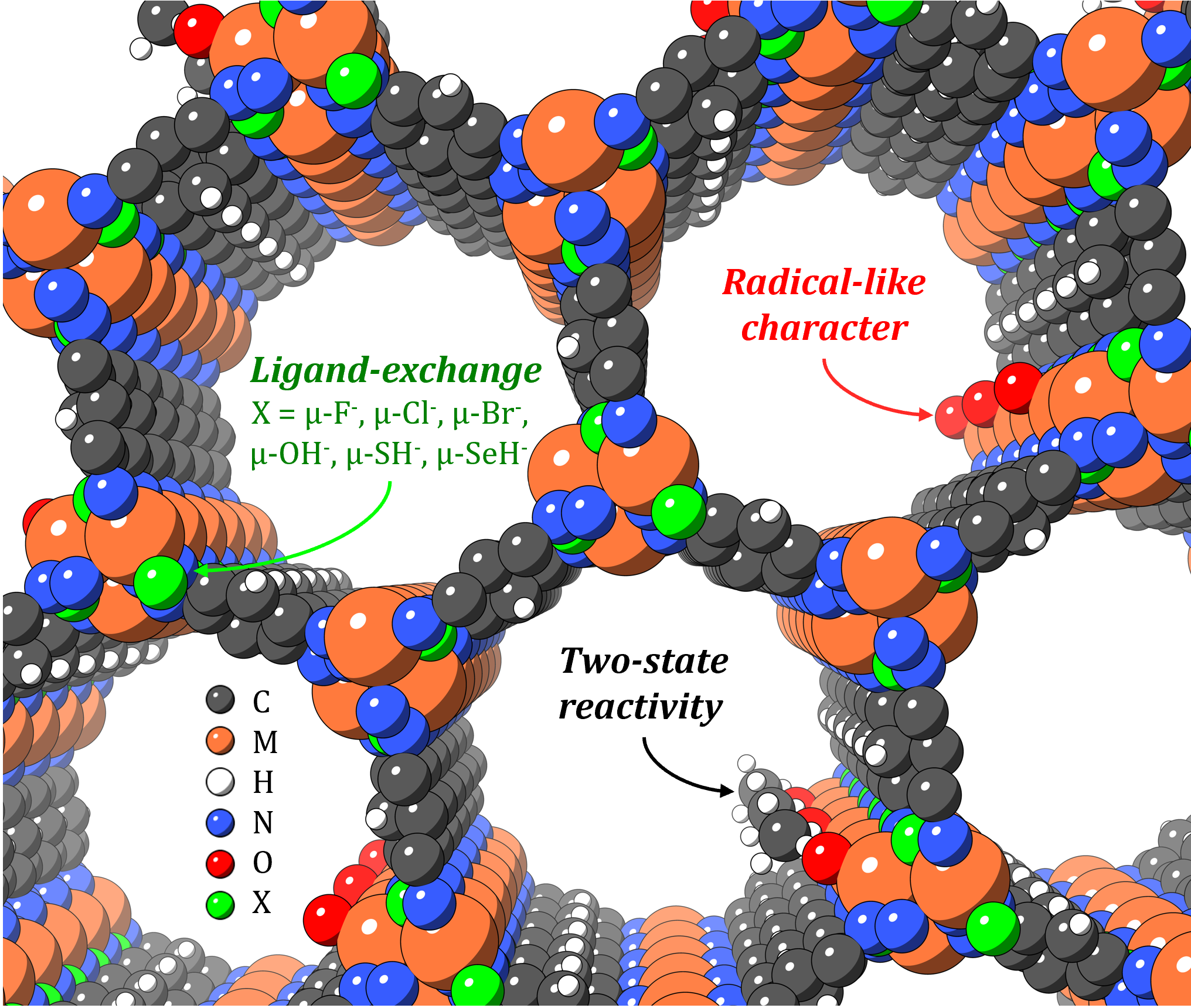2020 Virtual AIChE Annual Meeting
(631f) Tuning the Reactivity of Metal?Triazolate Frameworks for the Catalytic Oxidation of Strong C?H Bonds
Authors
Andrew S. Rosen - Presenter, Northwestern University
Justin Notestein, Northwestern University
Randall Snurr, Northwestern University
Metalâorganic frameworks (MOFs) with coordinatively unsaturated metal sites have emerged as a promising class of materials for the catalytic oxidation of strong CâH bonds via the formation of transient but highly reactive metal-oxo species. Through quantum-chemical calculations, we investigate a family of MOFs containing triazolate linkers, M2X2(BBTA) (M = metal, X = bridging anion, H2BBTA = 1H,5H-benzo(1,2-d:4,5-dâ²)bistriazole), for their ability to form terminal metal-oxo sites and subsequently activate the CâH bond of methane. By varying the metal (M = V2+, Cr2+, Mn2+, Fe2+, Co2+, Ni2+, Cu2+) and bridging anion (X = F-, Cl-, Br-, OH-, SH-, SeH-) in the framework, we show that it is possible to significantly tune the reactivity of this series of metalâtriazolate frameworks. For the purposes of stabilizing high-valent, terminal metal-oxo sites, we predict that the presence of μ-OH-, μ-SH-, or μ-SeH- ligands would often be ideal. For the vast majority of MOFs investigated in this work, the CâH activation of methane is predicted to occur with relatively low barriers. The electronic structure of the metal-oxo active site is also analyzed for each combination of metal and bridging ligand, for which we find that spin density localized on the oxo ligand is not an inherent requirement for low CâH activation barriers. For the Mn- and Fe-containing frameworks in particular, we show that a transition from ferromagnetic to antiferromagnetic coupling between the metal binding site and terminal oxo ligand during the CâH activation process can greatly reduce the kinetic barrier, a unique case of two-state reactivity without a change in the net spin multiplicity. We conclude by highlighting notable MOFs from the screening process, including some that are predicted to exhibit unique H-bonding interactions with oxidants such as O2 and H2O2 to more readily form highly reactive intermediates that can activate the CâH bonds of light hydrocarbons.


